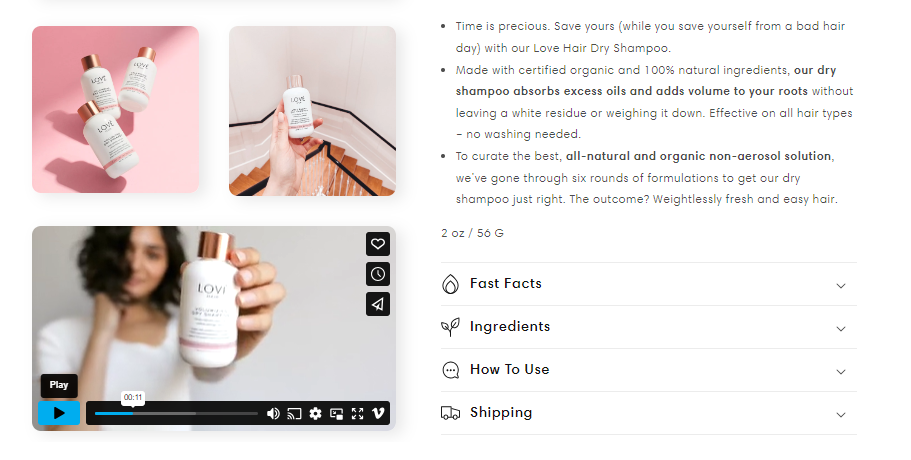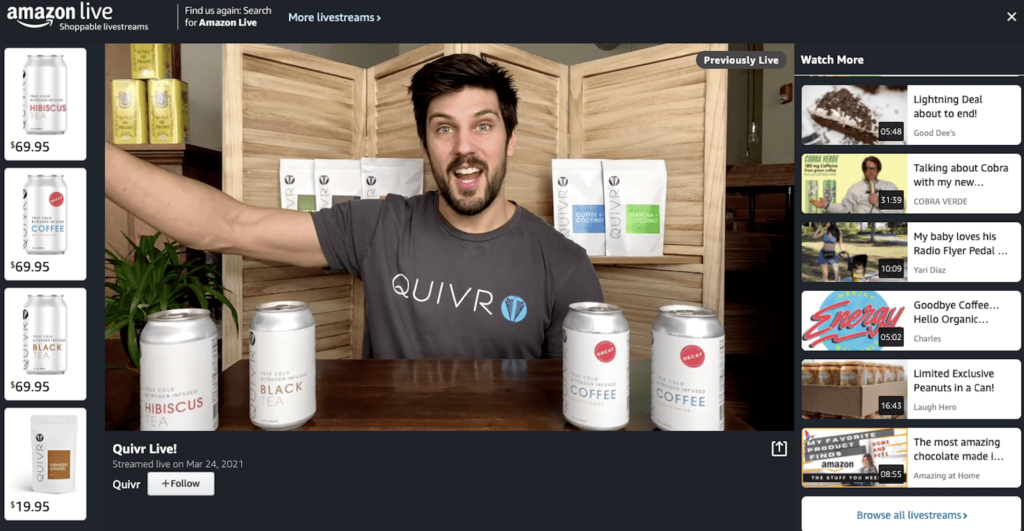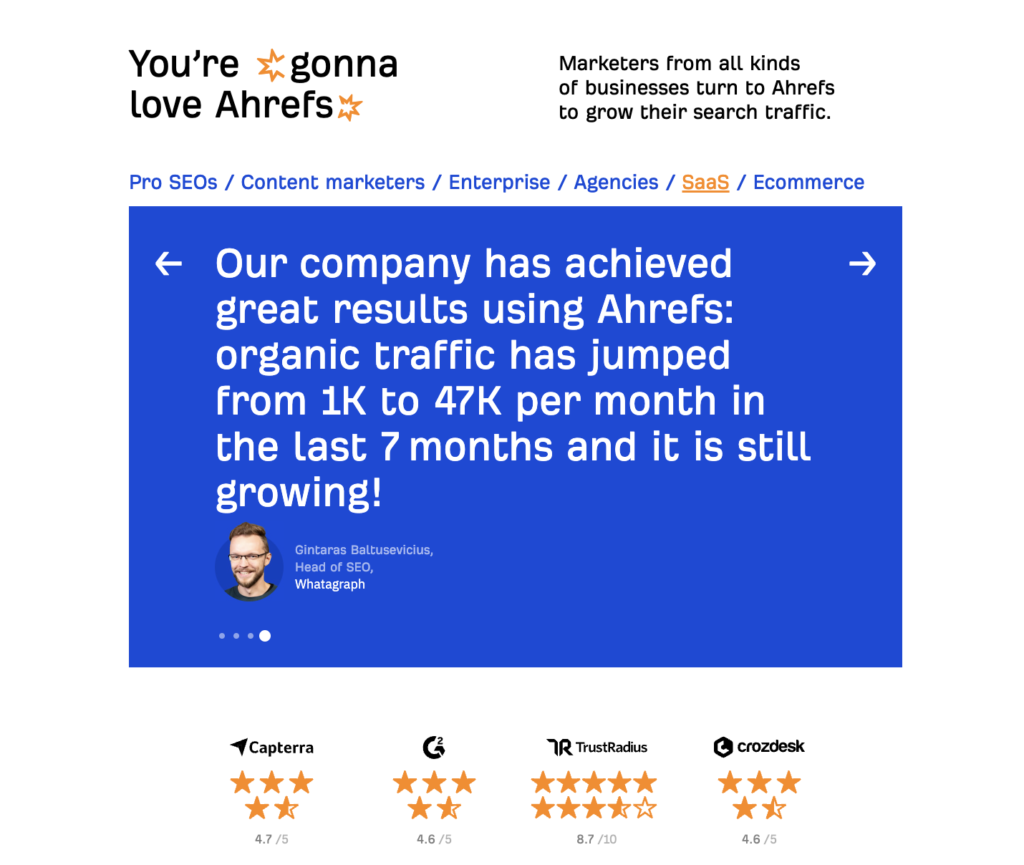In the fast-paced world of ecommerce, content marketing has become a game-changer, enabling businesses to captivate audiences and drive growth. In fact, even 73% of B2B and 70% of B2C businesses use content marketing as part of their marketing strategy.
With the constantly changing marketing world, ecommerce brands must stay ahead of the curve and shine through the competition. So let’s learn how to build and leverage content marketing for ecommerce, shall we?
Content Marketing for Ecommerce – Why it’s Important?
Reaching a huge audience for 62% cheaper than traditional advertising methods? Count us in! Content marketing for ecommerce does exactly that. And it’s also easy to monitor results and adjust the strategy to changing trends. Sounds great, right?
There are additional benefits of ecommerce content marketing. You can::
- Build brand awareness: You can reach many people through different channels and establish your brand as a thought leader in online retail.
- Generate leads: By providing valuable content, you can motivate potential customers to leave contact information or sign up for your email list, increasing lead generation.
- Foster brand loyalty: Creating content that resonates with your audience enhances trust and loyalty.
- Boost sales: By creating educational content about your products, you increase the odds of people purchasing them.
- Increase your website traffic: By creating engaging content, you’ll encourage more people to visit your ecommerce site.
9 Ecommerce Content Marketing Strategy Elements
With content marketing for ecommerce, you can drive more traffic. And if you pay attention to vital elements of the content marketing strategy, that traffic (aka prospective customers) can turn into paying and loyal customers.
Now, let’s look at the 9 elements (+bonus) of an effective strategy for ecommerce content marketing.
1. Know Your Target Audience
Do you know who your target audience is?
It’s crucial to understand whom you want to cater to in the first place because today, more customers expect a personalized experience. You can’t give them that personalized experience if you don’t know who they are and what they want.
To identify and know your audience, just follow these tips:
- Survey your buyers. Ask them for important information like their age, gender, and location. Don’t forget to ask them about their preferences, pain points, and interests, too. You can come up with a survey template and just tweak the template accordingly for personalization purposes.
- Look at your competitors. Chances are, they have the same target audience as you do.
- Use analytics. Analyze your website visits using analytics tools like Google Analytics. Look at your social media data as well. What is your target audience’s preferred content? How do they behave on those platforms?
- Look at market reports. Read about trends in consumer behavior in your industry, among other things.
After obtaining the data, you should create a target audience data profile that could look like this:
A detailed audience profile can help you reach the people truly interested in the products you offer. As a result, you can develop a content strategy that resonates with your audience and increases your conversion rate.
2. Create Visually Appealing Content
Visually engaging content is key to an effective content marketing plan. Images play a huge role in that and help you showcase your product in a positive light. Other critical visual components you should pay attention to include your color palette, buttons, typography, and overall design.
As part of your content marketing for ecommerce, all these visual elements must not only be eye-catching. They should also align with your brand’s visual identity. For example, if you’re a serious brand, you’ll have to avoid dynamic images and button shapes, typography with rough edges, and vivid colors in your online retail content. Your overall design should also convey that serious personality. So, opt for clean and symmetrical layouts instead.
Check out this example of visually appealing eCommerce content that aligns with the brand’s personality.
Marketers at Cardon, which offers skin and hair products for men, emphasize their products’ simplicity and organic nature in their emails.
Notice the simple typography, the use of colors in nature like green and brown, and the clean and straightforward layout:

As a final tip, use your visual elements strategically on your homepage, category, product page, emails, or other platforms. Your CTA button, for instance, should stand out. That means you shouldn’t lump it together with your other visual elements. Otherwise, users will miss it and won’t be able to take your desired action.
Also, don’t forget to use the right image size for your specific pages. For instance, on product pages, the recommended sizes are 640×640 or 800×800.
3. Use Videos
An engaging video is a powerful tool for an eCommerce brand to connect with consumers. You can use video content to showcase your products, industry expertise, or company culture.
You must ensure your videos stand out to captivate and retain your customers’ attention. Emphasize your brand’s unique personality in your video and stay authentic to your values and communication.
However, remember to use a tone and style that appeals to your audience, whether humorous, educational, or inspirational.
As part of your content marketing for ecommerce, include videos in your product pages. You can create videos that showcase your product, for example. Check out this video posted on a Love Hair product page:

Just make sure your video isn’t that long. The longest it should run should be three minutes.
4. Leverage Effective Marketing Channel/s
With so many marketing channels available, it might be difficult to choose the right one. But it’s an extremely important task if you want to reach the expected audience with your content.
To determine which channels are the best for your content marketing plan, analyze key performance indicators (KPIs) and track metrics. They can include average eCommerce conversion, click-through, and engagement rates across different channels.
To monitor the sources of ecommerce website traffic, set up Google Analytics. There, you can create ecommerce events to collect information about the shopping behavior of your users.
You want to increase your marketing efforts on the two channels that bring you the most traffic, for example, social media marketing and blogging. You’d also benefit from increasing your SEO efforts to grow organic traffic to your ecommerce site and appear higher in search results.
5. Implement SEO
A solid search engine optimization plan is crucial for an ecommerce content marketing strategy. SEO can increase your content’s visibility, brand awareness, organic traffic to your website, and conversion rates.
When you select the right keywords and consistently create content around them, you will attract organic search traffic. With SEO, you’ll achieve a steady inflow of traffic over time instead of losing this traffic when you stop paying for ads.
Start with on-page SEO strategies, such as incorporating relevant keywords into content, URLs, and product names. Ecommerce companies should also use technical SEO practices such as creating a friendly site structure and improving page speed. This can not only help you appear higher in search engines but also improve user experience.
6. Ensure Amazon Visibility
If you run your online store on Amazon, improving visibility on the platform is a critical part of content marketing for ecommerce. People are likelier to click on the first shop they see, so enhancing your visibility on Amazon can help you increase your profits.
The first thing you can do is optimize your product listings. Select the right keywords and incorporate them in your titles, descriptions, and images to help your products stand out.
Also, products with four stars or higher are more likely to rank on Amazon search results. So, encourage customers to leave reviews by offering discounts or other incentives.
7. Take Advantage of Influencer Marketing
Influencer marketing is a popular choice for ecommerce content strategy. Influencers can help you reach a wider audience and boost brand visibility.
First, you need to identify the right social media influencers in your niche. They should have followers that match your target audience and produce content that aligns with your brand identity.
It’s also great to find experts or professionals in the field. For example, a supplement brand, Genuine Health, partnered with a nutritionist and herbalist influencer.

Remember to set clear expectations for the partnership, including a content plan that outlines the type of content and posting frequency. Before publishing, ensure the content meets your company’s standards.
Also read: What is Promotional Marketing? Definition, Examples, Ideas
8. Employ Live Shopping and Lookbooks
Live Shopping is hosting live video broadcasts on social media platforms like Facebook, Instagram, and YouTube to showcase products in real time.
Prospective customers can interact with the host during the live broadcast, ask questions, and get responses immediately. Additionally, the embedded shopping feature allows people to purchase the products.
Here is an example of Live Shopping by Quivr on Amazon Live.

On the other hand, lookbooks offer a curated shopping experience that showcases your products in a highly stylized and attractive manner. Here’s an example.

To incorporate these game-changing techniques into your ecommerce content marketing plan, you may need to invest in technology and tools like CommentSold And Canva.
9. Perform Competitor Analysis
The key to any content marketing strategy is competitor analysis. By conducting it you will know what kind of content you should create in your niche.
Competitors’ research should include examining their eCommerce site, social media networks, and email campaigns. Pay attention to what content they have on their sites and how they encourage visitors to purchase.
You can also conduct surveys to understand what your audience appreciates in your niche the most to improve your content marketing.
Bonus: Don’t Forget Customer Feedback
Customer feedback is extremely important in ecommerce. It can help you actively develop and improve your products but also create content that engages and inspires.
There are several ways you can ask people for feedback. Use social media platforms, online reviews, surveys, or chatbots, for example. You can then post this feedback in strategic places as part of your online content strategy. This social proof may be the nudge your website visitors need to take your desired action.
Check out Ahrefs’ homepage below:

The site doesn’t just showcase testimonials from its satisfied customers. It also has high marks overall on trusted review sites like Capterra and G2.
To boost your eCommerce content marketing efforts, you can also use these reviews in the form of user-generated content for social media marketing purposes.
In Closing
Great content marketing is vital for any ecommerce business that wants to engage with its audience. If you incorporate vital elements of content marketing strategy, you can improve your search engine rankings, eCommerce site traffic, and conversions.
Continue to improve your content, and you will achieve great brand loyalty and stay ahead of competitors. Good luck!
Also read:
- Newsletter Content: 12 Tips for Creating Compelling
- 8 Best Ecommerce Marketing Tools in 2023 (Free & Paid)
- Ecommerce Email Marketing Guide & Must-Include Campaigns
Author Bio
Tomasz Niezgoda is the Head Of Marketing at Surfer, a platform that merges content strategy, creation, and optimization into one smooth process. With almost a decade of experience in the industry, he is responsible for incorporating and executing marketing strategies. Currently, he manages a team of 5 wonderful experts.





